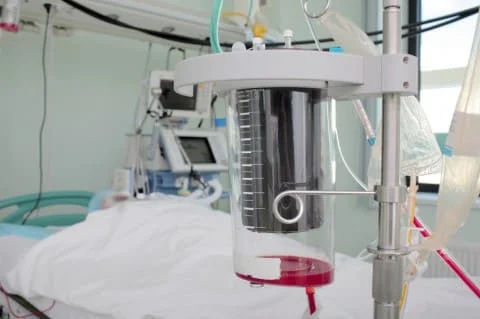Ever unloaded the dishwasher and found the spoons or knives didn’t come clean because they were stuck together? Well imagine that happening with surgical instruments. Placing instruments in bags made from open-cell foam is one way healthcare professionals avoid this. Steam reaches the surfaces but foam keeps them from touching.
Open-cell is another term for reticulated foam. One way of visualizing reticulated foam is to picture a mass of bubbles, then think how they’d look if the wall between each bubble was removed. Effectively, you’d have a three dimensional mesh where every cell is open to its neighbor. Cell size and density are controllable during manufacture. Density is specified in terms of pores per linear inch (ppi) and is controllable from 4 to 100 ppi. (A larger number means smaller pores.)
This results in some interesting and useful properties. Reticulated foam is compressible, yet springs back when the load is released. It’s lint-free, porous, and at under two pounds per cubic foot, lightweight. As a result, it’s used in a very wide range of applications. Here are some that may surprise you.
- Blood filtration and oxygenation. Heart-lung machines put oxygen back into blood, but tend to create bubbles. Passing the blood through a felted reticulated foam breaks these up, making it safe to return to the body.
- Air filtering. From automobile cabin air filters to nebulizers, there’s a long list of air filtration applications. Even small lawnmower engines use reticulated foam to prevent dust and grit from being sucked in.
- Filtering molten metal. In casting, as metal is poured into a die it’s important to remove impurities. Reticulated foam wouldn’t withstand the heat; instead it’s dipped into a ceramic slurry which dries to leave a more durable, heat-resistant mesh.
- Stabilizing fluid in tanks. Gasoline in an empty tank will slosh about, but fill that tank with reticulated foam and the gasoline moves slower. The foam can also help dissipate static, reducing the risk of fire if the tank ruptures. (Ink jet printer cartridges are a similar reservoir-type application.)
- EKG pads. Electrical conductivity between skin and electrode pads is improved with a specially formulated gel, but applying this adds a rather messy step. Reticulated foam EKG pads are pre-impregnated with the gel, saving time on prep and clean-up.
- Sound absorption. Reticulated foam makes an excellent windshield for microphones. Sound still penetrates but wind buffeting is absorbed, eliminating most background noise.
- Surgical instrument sterilization. Discussed before, reticulated foam: allows steam to penetrate, stops instruments touching, and avoids lint carryover.
Is your application next?
Reticulated foam is surprisingly versatile. With an open cellular structure it can filter or stabilize fluids, so finds application in areas ranging from motorsport to healthcare. If you’re interested in learning how this lightweight material could benefit you, contact Merryweather today.


